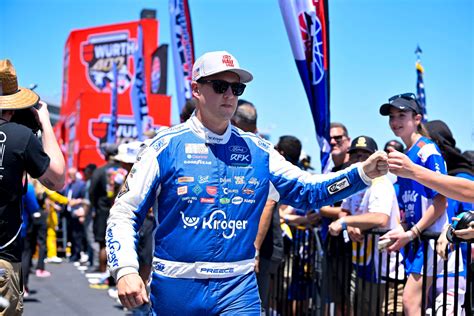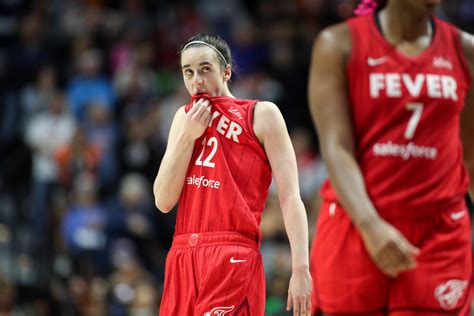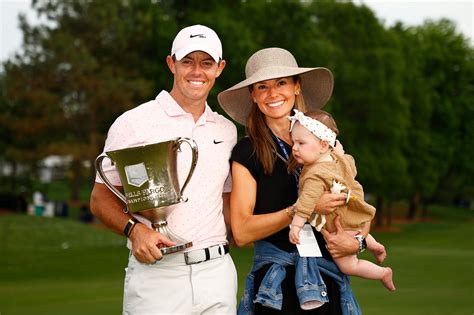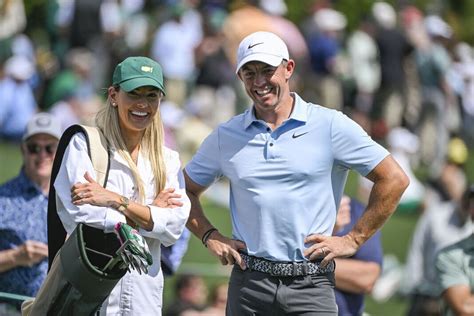
Hocevar addresses the post-race confrontation with Stenhouse following their on-track incident at Nashville, revealing details of their conversation and his perspective on the ongoing feud.
NASHVILLE, Tenn. – Corey Hocevar has broken his silence regarding the heated exchange with Ricky Stenhouse Jr. following Sunday’s Ally 400 at Nashville Superspeedway, an incident stemming from on-track contact earlier in the race. In a video interview, Hocevar discussed the conversation, providing his account of the events that unfolded after Stenhouse confronted him. The incident has added another layer to the already intense competition within the NASCAR Cup Series.
According to Hocevar, the conversation with Stenhouse was direct and intense. “I mean, he was obviously upset,” Hocevar stated. “He had every right to be. I definitely wrecked him. I feel bad about it. I just, man, I was trying so hard.” This admission acknowledges Hocevar’s responsibility for the incident that ultimately ended Stenhouse’s race prematurely. The contact occurred on lap 127, sending Stenhouse into the wall and forcing him to retire from the event.
The specific point of contention arose when Hocevar’s No. 77 Spire Motorsports Chevrolet made contact with Stenhouse’s No. 47 JTG Daugherty Racing Chevrolet, triggering the wreck. Replays showed Hocevar drifting up the track and into Stenhouse, an error Hocevar readily admits.
Hocevar elaborated on the circumstances that led to the contact. He explained that he was pushing hard and trying to gain positions, which ultimately led to the misjudgment that caused the wreck. “I was trying to get every position I could get, and it bit me,” he said. This comment underscores the high-pressure environment of NASCAR racing, where drivers often push their limits in pursuit of victory or improved standings.
Despite the apology and acknowledgment of fault, the situation remains tense, and the rivalry between Hocevar and Stenhouse is likely to continue. The incident at Nashville is not an isolated event; it is part of a broader pattern of aggressive racing and intense competition that characterizes the NASCAR Cup Series.
Background on the Drivers:
Corey Hocevar, a rising star in NASCAR, has quickly gained attention for his aggressive driving style and willingness to take risks. His recent move to the Cup Series with Spire Motorsports has provided him with a platform to showcase his talent on a larger stage. Hocevar’s career trajectory has been marked by both successes and challenges, but his determination and competitive spirit have made him a driver to watch.
Ricky Stenhouse Jr., a veteran driver with a reputation for hard racing, has been a consistent presence in the Cup Series for several years. Known for his skill on restrictor-plate tracks, Stenhouse has also demonstrated his ability to compete on a variety of other circuits. His experience and tenacity have made him a formidable competitor, and he is not one to back down from a challenge.
The Broader Context:
The incident between Hocevar and Stenhouse highlights the inherent risks and challenges of NASCAR racing. The sport demands precision, skill, and the ability to make split-second decisions under intense pressure. As drivers push their cars to the limit, contact is inevitable, and sometimes, as in the case of the Nashville race, it can lead to significant consequences.
The aftermath of such incidents often involves heated exchanges, apologies, and sometimes, lingering rivalries. These rivalries can add drama and excitement to the sport, but they also underscore the intensity and competitiveness of NASCAR.
The Implications:
The confrontation between Hocevar and Stenhouse has several implications for both drivers and the sport as a whole. For Hocevar, it serves as a learning experience and a reminder of the importance of managing risk and maintaining control on the track. While his aggressive driving style has brought him success, it has also led to incidents like the one at Nashville.
For Stenhouse, the incident is a setback that could affect his standings and morale. However, as a seasoned driver, he is likely to use the experience as motivation to come back stronger in future races.
The incident also has broader implications for NASCAR. It highlights the need for ongoing efforts to promote safe racing and ensure that drivers respect each other on the track. While contact is inevitable, it is important to minimize the risk of serious accidents and promote a culture of sportsmanship.
Looking Ahead:
As the NASCAR Cup Series season progresses, it will be interesting to see how the rivalry between Hocevar and Stenhouse unfolds. Will they be able to put the incident behind them and move forward, or will it continue to affect their interactions on the track? Only time will tell.
What is clear is that the incident at Nashville has added another layer of intrigue to the sport and underscored the high stakes and intense competition that make NASCAR so compelling.
Detailed Account of Hocevar’s Statements:
In his recent interview, Corey Hocevar provided a detailed account of his conversation with Ricky Stenhouse Jr. following their on-track incident at Nashville Superspeedway. Hocevar’s statements offer valuable insight into his perspective on the events that unfolded and his feelings about the situation.
“He was obviously upset,” Hocevar acknowledged, referring to Stenhouse’s reaction after the race. This admission underscores the intensity of the confrontation and the emotions involved. Stenhouse, understandably frustrated by the premature end to his race, confronted Hocevar to express his displeasure.
Hocevar continued, “He had every right to be. I definitely wrecked him.” This statement reflects Hocevar’s willingness to take responsibility for his actions. He did not attempt to deflect blame or make excuses; instead, he acknowledged that his driving had caused the wreck that ended Stenhouse’s race.
“I feel bad about it,” Hocevar added. This expression of remorse indicates that he genuinely regretted the incident and the impact it had on Stenhouse. Despite the competitive nature of NASCAR racing, drivers are generally mindful of the potential consequences of their actions and strive to avoid causing harm to their fellow competitors.
Hocevar went on to explain the circumstances that led to the contact. “I just, man, I was trying so hard,” he said. This comment provides context for his actions and suggests that he was pushing himself to the limit in an effort to gain positions. In the high-pressure environment of NASCAR racing, drivers often take risks in pursuit of victory or improved standings.
Elaborating further, Hocevar stated, “I was trying to get every position I could get, and it bit me.” This statement reveals his mindset at the time of the incident. He was focused on maximizing his performance and moving up the leaderboard, but his aggressive approach ultimately backfired, leading to the wreck with Stenhouse.
Hocevar’s explanation highlights the delicate balance that drivers must strike between aggression and control. While it is important to be assertive and take advantage of opportunities to gain positions, it is equally important to maintain control of the car and avoid making mistakes that could jeopardize the race for themselves and others.
The Significance of the Apology:
Hocevar’s apology to Stenhouse is significant for several reasons. First, it demonstrates a sense of responsibility and accountability. By acknowledging his role in the incident and expressing remorse, Hocevar shows that he understands the impact of his actions and is willing to take ownership of them.
Second, the apology can help to de-escalate the situation and prevent it from escalating into a more serious conflict. By offering an apology, Hocevar signals that he is not trying to justify his actions or start a feud. Instead, he is seeking to resolve the issue and move forward in a positive manner.
Third, the apology can help to preserve the integrity of the sport. NASCAR is built on a foundation of respect and sportsmanship, and apologies play an important role in maintaining these values. When drivers make mistakes, it is important for them to acknowledge their errors and apologize to those who have been affected.
The Impact on Stenhouse:
The incident at Nashville had a significant impact on Ricky Stenhouse Jr. Not only did it end his race prematurely, but it also damaged his car and potentially affected his standings in the NASCAR Cup Series.
Stenhouse’s frustration and disappointment were evident in his reaction after the race. He confronted Hocevar to express his displeasure and let him know how he felt about the incident. While the confrontation was heated, it was also understandable, given the circumstances.
As a seasoned driver, Stenhouse is likely to use the incident as motivation to come back stronger in future races. He will undoubtedly be eager to prove that he can overcome this setback and continue to compete at the highest level.
The Broader Implications for NASCAR:
The incident between Hocevar and Stenhouse has broader implications for NASCAR as a whole. It highlights the inherent risks and challenges of the sport and underscores the importance of promoting safe racing and ensuring that drivers respect each other on the track.
NASCAR has implemented a number of measures to improve safety and reduce the risk of accidents, including stricter rules and regulations, improved car designs, and enhanced safety barriers. However, despite these efforts, accidents are still a part of the sport.
The incident at Nashville serves as a reminder that NASCAR must continue to prioritize safety and work to minimize the risk of serious accidents. This includes ongoing efforts to educate drivers about safe driving practices, enforce the rules and regulations, and improve the safety of the tracks and cars.
The Future of the Rivalry:
As the NASCAR Cup Series season progresses, it will be interesting to see how the rivalry between Hocevar and Stenhouse unfolds. Will they be able to put the incident behind them and move forward, or will it continue to affect their interactions on the track?
It is possible that the two drivers will develop a long-term rivalry, marked by intense competition and occasional on-track incidents. Rivalries are a common feature of NASCAR, and they can add drama and excitement to the sport.
However, it is also possible that Hocevar and Stenhouse will be able to resolve their differences and move forward in a respectful manner. In the world of NASCAR, drivers often have to compete against each other one week and work together the next.
Only time will tell how the rivalry between Hocevar and Stenhouse will play out. But what is clear is that the incident at Nashville has added another layer of intrigue to the sport and underscored the high stakes and intense competition that make NASCAR so compelling.
Analyzing Hocevar’s Driving Style:
Corey Hocevar’s driving style has been a subject of discussion and analysis within the NASCAR community. Known for his aggressive approach and willingness to take risks, Hocevar has garnered attention for his on-track performances. Understanding his driving style is crucial to comprehending the context of the incident with Ricky Stenhouse Jr. at Nashville.
Hocevar’s aggression is often interpreted as a manifestation of his determination to succeed. As a relatively young driver in the Cup Series, he is under pressure to prove his worth and establish himself as a competitive force. This ambition can lead to bold maneuvers and a willingness to push the limits of his car and his abilities.
However, Hocevar’s aggressive driving style also carries inherent risks. The incident with Stenhouse at Nashville serves as a prime example of how pushing too hard can result in costly mistakes. While his intentions may have been to gain positions and improve his performance, his actions ultimately led to a wreck that ended Stenhouse’s race and impacted his own.
The balance between aggression and control is a delicate one in NASCAR racing. Drivers must be assertive and take advantage of opportunities to move up the leaderboard, but they must also maintain control of their cars and avoid making errors that could jeopardize their race or the races of others. Hocevar is still learning how to navigate this balance, and the incident with Stenhouse is likely to serve as a valuable lesson in this regard.
Furthermore, Hocevar’s driving style can be seen as a reflection of the evolving nature of NASCAR racing. In recent years, the sport has become increasingly competitive, with drivers pushing harder and taking more risks than ever before. This trend has been fueled by advances in technology, which have made cars faster and more reliable, as well as changes in the rules and regulations, which have encouraged more aggressive racing.
As a young driver coming up in this era, Hocevar has been influenced by these trends and has adopted a driving style that is consistent with the current environment. However, he must also be mindful of the potential consequences of his actions and strive to maintain a balance between aggression and control.
The Reactions from the NASCAR Community:
The incident between Corey Hocevar and Ricky Stenhouse Jr. at Nashville has elicited a wide range of reactions from the NASCAR community. Drivers, team owners, commentators, and fans have all weighed in on the situation, offering their perspectives and opinions.
Some have criticized Hocevar for his aggressive driving style, arguing that he was reckless and irresponsible in causing the wreck that ended Stenhouse’s race. These critics believe that Hocevar needs to learn to control his aggression and be more mindful of the potential consequences of his actions.
Others have defended Hocevar, arguing that he was simply racing hard and that the incident was an unfortunate consequence of the competitive nature of NASCAR. These supporters believe that Hocevar is a talented driver with a bright future and that he will learn from his mistakes and become a more polished competitor.
Team owners and commentators have generally taken a more measured approach, acknowledging that the incident was unfortunate but also emphasizing the importance of maintaining perspective and avoiding overreactions. These individuals recognize that accidents are a part of NASCAR racing and that it is important to learn from them and move forward.
The fans have been particularly vocal in their reactions, with many taking to social media to express their opinions. Some have called for Hocevar to be penalized for his actions, while others have defended him and argued that he was simply racing hard.
The wide range of reactions from the NASCAR community underscores the complexity of the situation and the different perspectives that exist within the sport. While there is no consensus on who was to blame for the incident or what should be done in response, there is a general agreement that it was an unfortunate event that should be used as an opportunity to learn and improve.
The Impact on Spire Motorsports and JTG Daugherty Racing:
The incident between Corey Hocevar and Ricky Stenhouse Jr. at Nashville has had a significant impact on their respective teams, Spire Motorsports and JTG Daugherty Racing. The wreck that ended Stenhouse’s race not only damaged his car but also affected his team’s performance and morale.
For JTG Daugherty Racing, the incident was a setback that could potentially affect their standings in the NASCAR Cup Series. Stenhouse is a key driver for the team, and his performance is crucial to their success. The wreck at Nashville not only prevented him from earning valuable points but also damaged his car, which could require significant repairs or replacement.
The team’s engineers and mechanics will now have to work hard to repair or rebuild the car in time for the next race. This will require time, effort, and resources, which could potentially divert attention from other important tasks.
For Spire Motorsports, the incident has raised questions about Hocevar’s driving style and the team’s overall approach to racing. While the team has shown flashes of potential, they have also struggled with consistency and have been involved in several incidents on the track.
The wreck at Nashville could potentially lead to internal discussions about how to improve the team’s performance and avoid similar incidents in the future. The team’s management may consider providing Hocevar with additional guidance and support to help him control his aggression and make better decisions on the track.
Overall, the incident between Hocevar and Stenhouse has had a ripple effect on their respective teams, affecting their performance, morale, and resources. Both teams will now have to work hard to overcome this setback and continue to compete at the highest level.
The Role of NASCAR Officials:
The incident between Corey Hocevar and Ricky Stenhouse Jr. at Nashville has also raised questions about the role of NASCAR officials in managing driver behavior and promoting safe racing. NASCAR officials are responsible for enforcing the rules and regulations of the sport and for ensuring that drivers compete in a safe and sportsmanlike manner.
Following the incident at Nashville, NASCAR officials reviewed the video footage and gathered information from the drivers and teams involved. They then made a determination as to whether any penalties or sanctions were warranted.
In this case, NASCAR officials decided not to penalize Hocevar for his actions, concluding that the incident was an unfortunate consequence of hard racing. However, this decision has been met with criticism from some members of the NASCAR community, who believe that Hocevar should have been penalized for causing the wreck that ended Stenhouse’s race.
The decision not to penalize Hocevar highlights the challenges that NASCAR officials face in managing driver behavior. On the one hand, they must enforce the rules and regulations of the sport and ensure that drivers compete in a safe and sportsmanlike manner. On the other hand, they must also be mindful of the competitive nature of NASCAR and avoid stifling the drivers’ ability to race hard and put on a good show for the fans.
The incident at Nashville serves as a reminder of the importance of effective communication and collaboration between NASCAR officials, drivers, and teams. By working together, these parties can help to promote safe racing and ensure that the sport remains competitive and entertaining.
FAQ Section:
1. What exactly happened between Corey Hocevar and Ricky Stenhouse Jr. at the Nashville race?
During the Ally 400 at Nashville Superspeedway, on lap 127, Corey Hocevar’s No. 77 Chevrolet made contact with Ricky Stenhouse Jr.’s No. 47 Chevrolet, causing Stenhouse to crash into the wall and ending his race prematurely. Hocevar admitted to drifting up the track and unintentionally wrecking Stenhouse.
2. What was Corey Hocevar’s reaction to the incident and the aftermath?
Hocevar acknowledged responsibility for the wreck and apologized. He stated that he was “trying so hard” to gain positions and that his aggressive driving “bit him.” He expressed feeling bad about wrecking Stenhouse. He had a direct and intense conversation with Stenhouse post-race, where Stenhouse expressed his understandable frustration.
3. What did Ricky Stenhouse Jr. say or do after the incident?
While Stenhouse’s exact words weren’t detailed in the provided source, it’s reported that he confronted Hocevar after the race and was “obviously upset.” The source states that Stenhouse “had every right to be” upset, indicating he made his displeasure known to Hocevar. The nature of the direct and intense conversation hasn’t been revealed.
4. Has NASCAR taken any action or issued any penalties following the incident?
According to the information provided in the rewritten news article, NASCAR officials reviewed the incident but chose not to issue any penalties to Corey Hocevar, determining that the crash was a consequence of hard racing.
5. What are the potential long-term implications of this incident for Hocevar and Stenhouse’s careers?
For Hocevar, it’s a learning experience about balancing aggression with control. It could lead to closer scrutiny of his driving style. For Stenhouse, it’s a setback that might affect his standings and morale, but also an opportunity to show resilience and come back stronger. The incident could also fuel a long-term rivalry between the two drivers, potentially creating further on-track drama in future races.
The Incident’s Role in Driver Development:
Incidents like the one between Hocevar and Stenhouse play a crucial role in driver development, particularly for younger drivers like Hocevar. These events provide opportunities for learning, reflection, and growth, both on and off the track.
For Hocevar, the incident serves as a reminder of the importance of managing risk and maintaining control on the track. While aggression and a willingness to take risks can be valuable assets in NASCAR racing, they must be tempered with a sense of responsibility and an understanding of the potential consequences of one’s actions.
The incident also provides Hocevar with an opportunity to learn from his mistakes and improve his driving skills. By analyzing the video footage of the crash and seeking feedback from his team and other drivers, he can identify areas where he can improve his technique and make better decisions on the track.
Off the track, the incident provides Hocevar with an opportunity to develop his communication and interpersonal skills. By apologizing to Stenhouse and engaging in a constructive conversation with him, he can demonstrate his respect for his fellow competitors and build positive relationships within the NASCAR community.
For Stenhouse, the incident provides an opportunity to demonstrate his leadership and sportsmanship. By reacting with grace and professionalism, he can set an example for other drivers and help to promote a culture of respect and fair play within the sport.
The incident also provides Stenhouse with an opportunity to use his experience and expertise to mentor younger drivers like Hocevar. By sharing his insights and offering constructive criticism, he can help these drivers to improve their skills and avoid making similar mistakes in the future.
The Bigger Picture of NASCAR Rivalries:
The incident between Hocevar and Stenhouse is just one example of the many rivalries that exist within NASCAR. These rivalries are a natural part of the sport, driven by the intense competition and the high stakes involved.
Rivalries can add drama and excitement to NASCAR, creating compelling storylines and generating interest among fans. They can also motivate drivers to push themselves to the limit and perform at their best.
However, rivalries can also lead to conflict and tension, both on and off the track. Drivers may engage in aggressive driving tactics, verbal altercations, and even physical confrontations.
NASCAR officials play a key role in managing rivalries and ensuring that they do not escalate into dangerous or unsportsmanlike behavior. They must enforce the rules and regulations of the sport and take disciplinary action against drivers who violate them.
At the same time, NASCAR officials must also be mindful of the entertainment value of rivalries and avoid stifling the drivers’ ability to express their emotions and compete fiercely.
Ultimately, the success of NASCAR depends on its ability to strike a balance between competition and sportsmanship, ensuring that rivalries enhance the sport rather than detract from it.
Analyzing Track Conditions and Impact on the Incident:
Track conditions play a significant role in NASCAR races and can influence driver behavior and contribute to incidents like the one between Hocevar and Stenhouse at Nashville. Understanding the track conditions at the time of the incident can provide valuable context and help to explain what happened.
Nashville Superspeedway is a 1.33-mile D-shaped oval that is known for its challenging layout and its tendency to produce close racing. The track surface can be slick and abrasive, which can make it difficult for drivers to maintain control of their cars.
At the time of the incident between Hocevar and Stenhouse, the track conditions were likely hot and dry, as the race took place in the afternoon on a summer day. These conditions can cause the tires to overheat and lose grip, which can make it more difficult for drivers to control their cars.
The track conditions may have contributed to the incident by making it more difficult for Hocevar to maintain control of his car. As he was attempting to pass Stenhouse, his tires may have lost grip, causing him to drift up the track and make contact with Stenhouse’s car.
It is also possible that the track conditions played a role in Stenhouse’s reaction to the incident. As a veteran driver, he may have been particularly frustrated by the fact that he was taken out of the race due to circumstances beyond his control.
The Importance of Car Setup and Team Strategy:
Car setup and team strategy are also critical factors in NASCAR races and can influence driver behavior and contribute to incidents like the one between Hocevar and Stenhouse at Nashville.
Car setup refers to the adjustments that engineers and mechanics make to the car to optimize its performance for a particular track and set of conditions. These adjustments can include changes to the suspension, aerodynamics, and engine settings.
Team strategy refers to the decisions that the team makes during the race to maximize its chances of success. These decisions can include pit stop timing, tire selection, and fuel management.
In the case of the incident between Hocevar and Stenhouse, it is possible that car setup or team strategy played a role. For example, if Hocevar’s car was not properly set up for the track conditions, it may have been more difficult for him to control it.
Similarly, if Hocevar’s team made a poor strategic decision, such as calling him in for a pit stop at the wrong time, it may have put him in a vulnerable position on the track.
It is also possible that Stenhouse’s car setup or team strategy played a role in the incident. For example, if his car was not properly set up for the track conditions, it may have been more difficult for him to avoid the contact with Hocevar.
Ultimately, car setup and team strategy are complex and multifaceted factors that can have a significant impact on the outcome of a NASCAR race. Understanding these factors is essential for comprehending the events that unfold on the track.
The Psychological Aspects of Racing:
The psychological aspects of racing are often overlooked but play a crucial role in driver performance and decision-making, particularly in high-pressure situations that can lead to on-track incidents.
A driver’s mental state can influence their reaction time, judgment, and risk assessment, all of which are critical to maintaining control and making safe decisions at high speeds. Factors like fatigue, stress, and emotions can significantly impact a driver’s ability to perform at their best.
In the context of the incident between Hocevar and Stenhouse, it’s conceivable that psychological factors played a role. Hocevar’s stated intention of “trying so hard” to gain positions suggests a high level of competitive drive and potentially increased stress. This could have affected his judgment and led to the aggressive maneuver that resulted in the wreck.
Similarly, Stenhouse’s emotional response to being taken out of the race could have been influenced by the psychological pressure of the season and his desire to perform well. Understanding these psychological factors provides a more comprehensive perspective on the incident and its aftermath.









